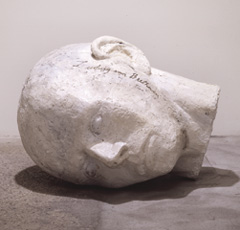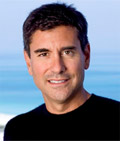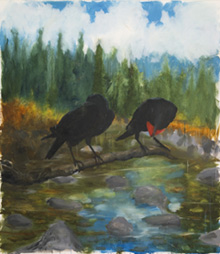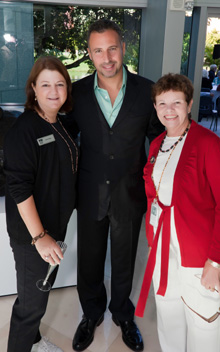Brilliance in Our Midst
Anthony Japour Examines Enrique Martinez Celaya


Anthony Japour (AJ) is an independent curator, private art dealer and owner of AJ Japour Gallery. The gallery deals in contemporary art with a focus on the Chinese Contemporary Art Movement and its relationship to the pillars of Western Contemporary Art. Since 2003, AJ has produced numerous art exhibitions and installations in Miami and South Florida. In addition, the Gallery’s secondary mission is to support organizations dedicated to the health, education, and welfare of children. AJ has served on the Fine Arts Board and the Cultural Arts Council of the City of Miami Beach.

Art Basel Miami Beach week presents so many competing events that one can try to do “everything” or sit down and choose the events more carefully that suit your interests. This is what I did this year. The tipping point has been reached; now in its ninth edition, Art Basel Miami Beach week reached greater balance by giving greater weight to the artists rather than to the events. Emi Fontana, Director of West of Rome, the Los Angeles-based non-profit public arts group (and former exhibitor at the ABMB Fair) engaged in an Art Basel Miami Beach Conversation: “Making Artists’ Dreams Come True” was case and point.
As was on Sunday, Dec 5th, when Florida International University’s Frost Museum held a special breakfast with a guest lecture by artist, Enrique Martinez Celaya. Martinez Celaya is without question doing the most important work in Miami at this time. In fact, what I heard during Art Basel Miami Beach week this year was just as impressive as what I saw.

Born six years after the Cuban Revolution in Havana, Cuba in 1964, Enrique Martinez Celaya immigrated in 1972 to Spain with his mother and then in 1975 moved to Puerto Rico. In 1986, he received a degree in applied physics at Cornell University and matriculated in a PhD program in Quantum Electronics at University of California at Berkeley. Within the first year of his PhD program he decided to abandon quantum electronics for art. In 1994 he received his MFA from the University of California, Santa Barbara and subsequently joined the faculty of Pamona College. Throughout his education and subsequent career the interweaving of poetry, philosophy, and the visual arts is ever-present. Martinez Celaya has had numerous exhibitions throughout Europe and in the United States including a 2007 Miami Art Museum exhibition entitled Nomad. In 2008, he and his family moved from Los Angeles to Florida and in 2009 he opened his studio in Miami, Whale & Star, centered on the role of art in life, spirit and community.
In preparing for this article, I visited Martinez Celaya’s works at the FIU Frost Museum, Gary Nader Fine Art, the First Edition of the Miami Sculpture Biennial, and visited with the artist himself at his studio. In doing so, I felt I couldn’t encapsulate the art of Martinez Celaya in words any better than his own. So with the artist’s permission what follows are excerpts from his talk at the Frost Museum:
Frost Talk
December, 5 2010
Excerpts from Enrique Martinez Celaya
Destroying work is not easy, but I do it often. If a work does not unveil truth, I don’t see a reason for it to be, and when I am tempted to relax my standards, I feel the calling of the artists and thinkers I respect. These influences define a worldview that exerts pressure in what I do, which in turn influences the choices I make as an artist.
In theory, it’s easy to speak of truth, risk and other virtuous aims, but in practice, we tend to settle for convenience, habit and compromises, especially in the arts where truth is not assumed to be essential as it is in science or religion. In fact, the very invocation of truth in an artistic context invites ridicule.

Artists and art enthusiasts don’t usually demand or receive more than the slight fog because they assume art should charm them or surprise them or even help them think, but not that it should transform them into better people. If they do look for clarity and ethics, they look for it elsewhere. And yet, for me, it is in art, and not in religion or science, that I look for truth.
Most likely, the prophetic imperative is too much for the rest of us, but this absurd demand is precisely what we need in a world were most hearts are in retreat. Perhaps I only speak of my own heart. Whatever the case might be, only when art imposes an absurdly elevated demand on who I am does it seem worthwhile. To be gimmicky and insincere most of us don’t need any help, but we do need assistance to transcend our smallness.
To face a great work of art, say a Velazquez, is to be burnt by it and its fire is wakefulness. In the wakefulness of the great work of art we sense our own dreaminess, our passivity, and we recognize, as a groggy underwater diver recognizes that to live he must return to the surface, who we might or could be if we were to be awake.
To be awake we must work very hard to remain clear, renounce most of what we consider precious and accept that only love shows the way. All great artworks invite the going out of our nature to discover love as a possibility. And in that possibility we might get a glimpse of the wholeness we lost while dreaming.


